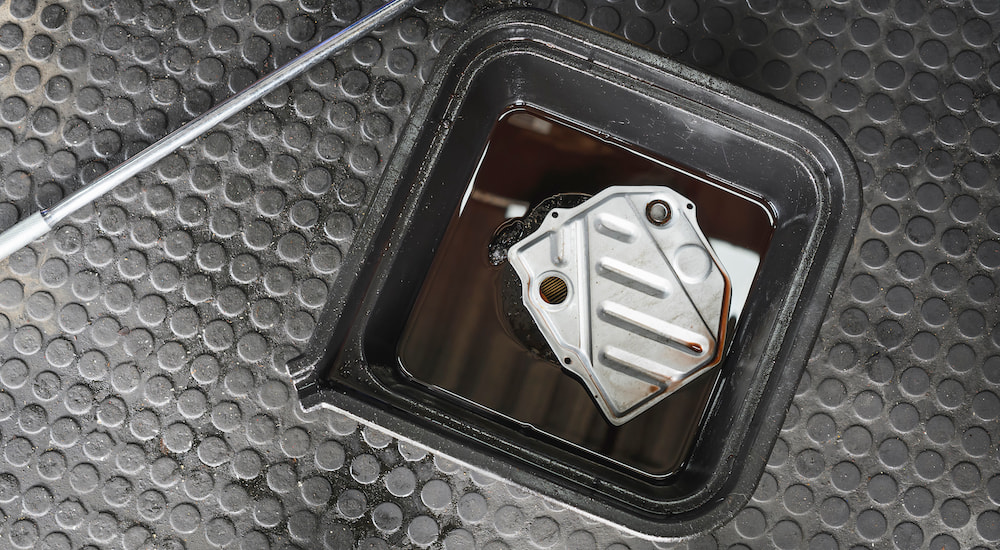Nearly every part of a vehicle is important for its performance, but the transmission is particularly vital. True to its name, this component transmits the engine power to the rest of the drivetrain and the wheels. If the transmission isn’t working correctly, your vehicle won’t either.
To keep your vehicle on the road, you must care for the transmission. Whether you take your car to a transmission shop or do it yourself, transmission maintenance will help it perform better and last longer. Conversely, a failed transmission can get expensive quickly. JD Power says replacing the transmission on most cars will range between $2,500 and $5,000, with sports cars and luxury cars being even more costly. A small investment in transmission maintenance now can save you a lot later.
Note that for this article, I’ll primarily discuss automatic transmission maintenance since this is the predominant US option. According to Motor1 and JATO Dynamics, just 1% of new cars sold in North America during the first half of 2023 were equipped with manual transmissions. However, manual transmissions are still popular in other countries. Statista reports that about 25% of cars still have a manual transmission worldwide, and the design still has its loyalists stateside. As such, I’ll include a few notes related to manual transmission maintenance.
Transmission Fluid
Changing the fluid at the recommended intervals is the most important way to maintain your transmission. Transmission fluid keeps both manual and automatic transmissions cool and well-lubricated. Over time, dirt and small metal particles can get into the fluid. This can cause serious damage if not regularly replaced with fresh, clean fluid.
Maintaining a regular fluid change schedule can extend the transmission’s life by up to 50%, making it remarkably effective maintenance. In most vehicles, the transmission fluid change interval is usually around 30,000 miles or 30 months, but it can go as high as 100,000 miles. Check your owner’s manual for more information, including what kind of fluid you need. Here are a few guidelines on automatic transmission fluid types for different vehicle nameplates:
- Ford: Mercon V
- GM: Dexron VI
- Dodge/Chrysler: ATF+4
- Honda: DW-1
- Toyota: ATF-WS
- General use: Multi-vehicle synthetic
- Continuously variable transmissions (CVT): Depends on the vehicle
Unless you’re an experienced DIYer, you should get your fluid changed at a transmission shop. They have the skills and tools (jacks, ramps, socket wrenches, etc.) required for this task and the means to dispose of the old fluid safely. Higher-mileage cars may also require a “power flush” to clear out particles and sludge that have built up.
In addition to scheduled fluid changes, you should inspect the transmission fluid every time you change the oil or do other routine maintenance. Good fluid will have a bright red color. If the level is not as high as it should be, add more of the correct fluid type until it is full. If the fluid is dark and muddy, smells burned, or the level is regularly too low, you need to change it as soon as possible. If these symptoms occur well before the scheduled maintenance interval, it may be a sign of a bigger issue.
Transmission Filter
Just like you change the oil filter at the same time as the engine oil, you should change the transmission filter at the same time as the fluid. The filter catches particles and contaminants before they can get into the system. Over time, the filter gets full and can no longer grab these particles, and it may get clogged altogether. Often, dirty fluid means the filter has reached the end of its service life.
While the manufacturer’s recommendations are the best guideline, you may need a transmission fluid and filter change more often if you do a lot of off-roading or high-performance driving. Hot environments and heavy city driving can also put more strain on the transmission. Talk to your mechanic and stay on top of those fluid checks to ensure you’re getting them done at the right intervals.
Annual Inspection
Once a year, you or your mechanic should inspect the transmission. Check for leaks, damaged seals, dents, signs of wear, and any other indicators that your transmission could have problems. On a manual transmission, check the clutch as well since it is integral to proper engagement. This is also a good time to check the fluid and filter. The annual inspection can be done as part of another service appointment.
Smart Driving Habits
Some of the best transmission maintenance you can do is not to abuse this important component. You should never shift from drive to reverse and vice versa unless the vehicle is completely stopped. If you have a manual transmission, avoid “riding the clutch” or keeping your foot on the clutch pedal between shifts. This causes slipping and wears the clutch out quickly. Other driving tips to preserve your transmission include:
- Let the vehicle warm up before you start driving, particularly in the winter.
- Don’t drive on mismatched or spare tires for extended periods, as this strains the transmission.
- Keep up with other maintenance, especially the engine and cooling system, as overheating can significantly reduce the transmission’s lifespan.
- Minimize driving in extremely hot temperatures and dusty environments.
- Don’t use your vehicle to tow heavy cargo unless the transmission was designed for it, such as a full-size pickup.
Signs You Need Transmission Maintenance
You should always be on the lookout for warnings that the transmission is due or overdue for service. Often, if you catch and address a problem early, it can be corrected without needing a major repair or new transmission. In addition to the discolored and foul-smelling fluid, there are some signs that your transmission needs attention:
- You hear rattling, whirring, grinding, and other strange noises.
- There are dark brown spots underneath the vehicle where you park it.
- The transmission is slipping out of gear.
- Shifting feels rough, or the vehicle takes longer than normal to shift.
- You feel much less acceleration and drive than normal, whether in certain gears or overall.
- A check engine light or warning code comes on that signifies transmission trouble.
- Fuel mileage suddenly drops without explanation.
- The clutch is dragging in a manual transmission.
These symptoms can indicate several potential transmission problems, from low fluid and clogged filters to the component failing outright. You should bring your car to a transmission shop as soon as possible. Ignoring the problem or trying to “ride it out” until your next scheduled service appointment will only make things worse and lead to more extensive and costly repairs. While some warning signs can also indicate other issues, you should still get the vehicle checked out immediately so they don’t spread further.
Stay on Top of Transmission Maintenance
By caring for your transmission, it will care for you. Well-built transmissions with proper care have lasted 300,000 miles or more. Conversely, failing to do maintenance can lead to the transmission failing in a fraction of the time. Simple tasks such as fluid and filter changes, annual inspections, and good driving choices are the bulk of what goes into transmission maintenance.
Speaking as someone who has been bitten before by neglecting transmission maintenance, I can’t stress its value enough. Follow the intervals in your owner’s or service manual, be on the lookout for any problems, and bring your vehicle to a reputable transmission shop at the first indication of trouble. Your vehicle and your wallet will thank you.






